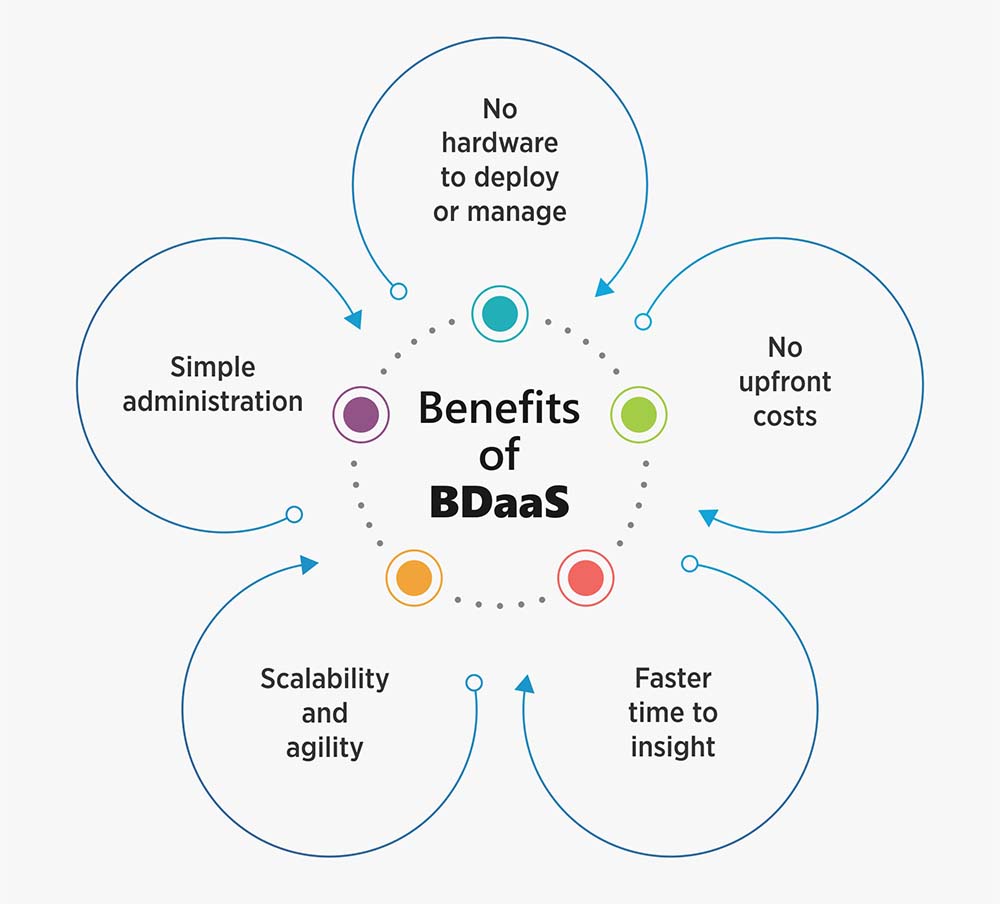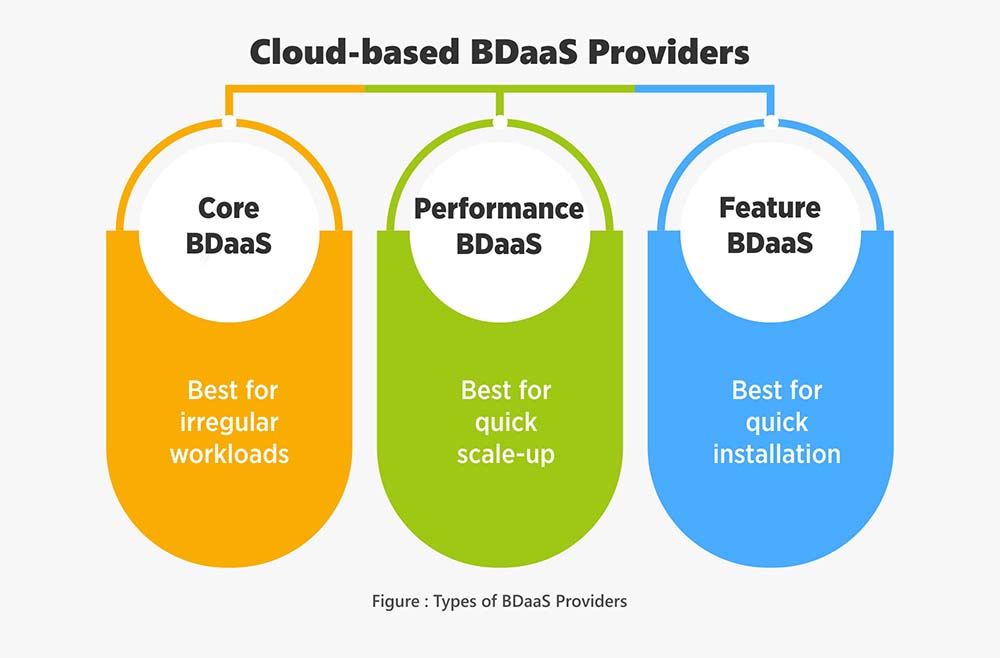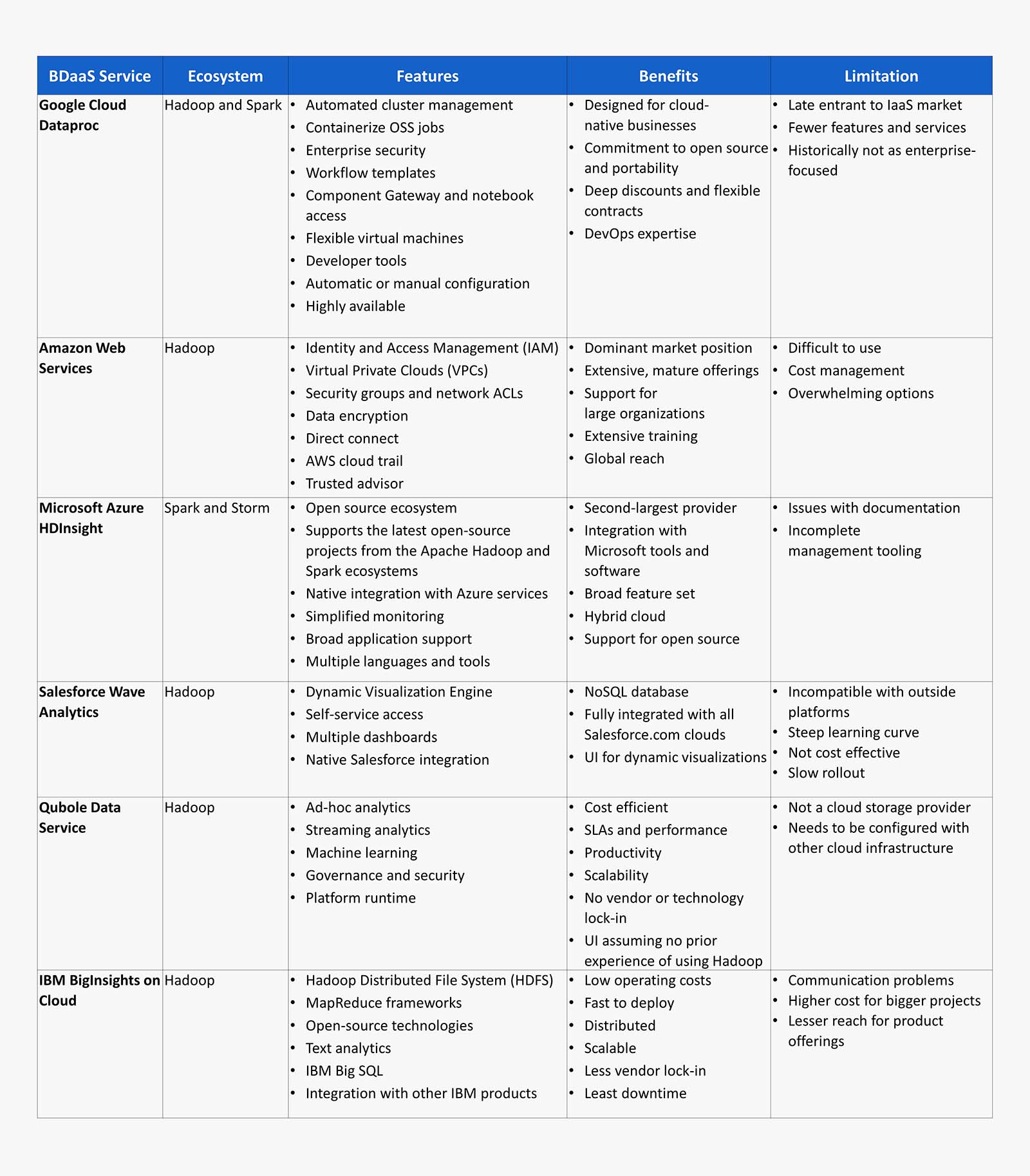
Organizations that manage, capture, and analyze data achieve greater gains over those who don’t.
Data is the backbone of businesses in the digital era.
Not long ago, business entities employed hundreds of thousands of staff members to compile and maintain databases. Today, many providers are delivering tools and information that can be readily used to gain a competitive advantage.
The overwhelming success of these solutions isn’t a surprise.
The cost of setting up a big data system can be substantial. Add to it the storage and maintenance costs. Setting up a fully functional system also demands hiring, training, and placing the right skills at the right places within the right time frame.
With Big Data-as-a-Service, organizations can outsource their big data functions, saving considerable costs, efforts, and time. A cherry-on top: these solutions are easily scalable.

The market for BDaaS is thriving and various options are available. The following article will help you choose the right one.
Types of BDaaSThree types of cloud-based BDaaS offerings are available:

An ideal solution for irregular workloads, Core BDaaS offers a basic Hadoop platform with YARN and HDFS and a few other services such as Hive. It can easily become a part of a larger architecture.
A classic example: Amazon Web Services’ Elastic Map Reduce (EMR) allows companies to combine other services around it. With it, they can build anything from data pipelines to full infrastructures.
Performance BDaaSPerformance BDaaS is suitable for rapidly growing companies already using Hadoop and reluctant to make big investments in their own data architecture.
With performance BDaaS, they can optimize their performance and streamline infrastructure. An example is a popular application, Altiscale, which optimizes performance for specific purposes.
Feature BDaaSSuitable for organizations that want to get their systems up and running fast, easy, and cheap, it offers additional features beyond the common Hadoop ecosystem.
Amazon’s and Google’s Infrastructure-as-a-Service (IaaS) software fall in this category.
6 Questions You Must Ask Before Opting for a BDaaS ProviderBDaaS is helpful in the analysis of massive, messy, and unstructured datasets. So, if you aren’t looking for something similar or something small scale, then it might not be the right solution. Right from the inception, scalability is important. Big data projects swell considerably beyond their initial scope.
- Does your provider have experience in your industry?
- Does it fit your need?
- How easily can you buy more processing resources and storage?
- What is the cost of moving large datasets?
- Does it offer real-time insights?
- Is it self-serviced or managed?
Once you’ve arrived at the answers to the above questions, compare the features, benefits, and limitations with your requirements.
Table 1.1 gives a comparison between common BDaaS solutions.

Choosing a data service company is a long-term strategy. A thorough assessment of the risks and the benefits is a must. Begin with these steps:
- Start small.
- Ensure data is clean.
- Check matrices are right.
- Confirm results are correct.
And then scale up gradually!







































